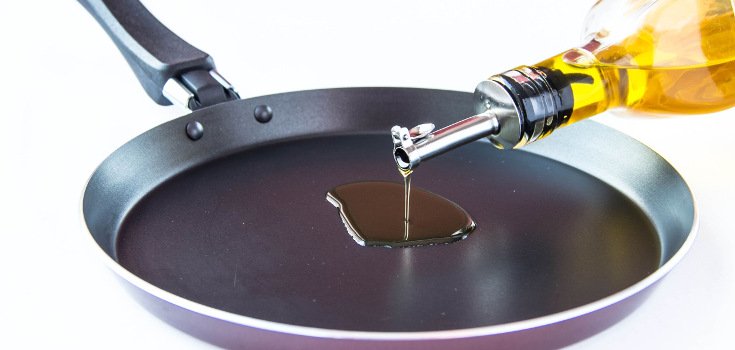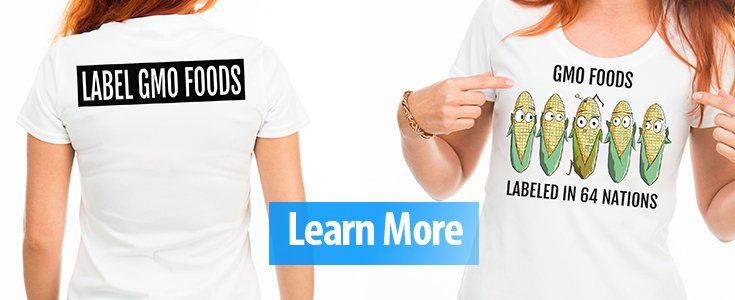Is This Cooking Mistake Causing Premature Aging?

The fat you choose to use in cooking can make the difference between a meal that supports health and a meal that throws off free radicals (thought to be a primary cause of the degeneration we refer to as aging). The higher the cooking heat, the more likely you are to be bombarded with free radicals, set off by breaks in fatty acid chains. There are only a few fats that can defy oxidation and its cousin, rancidity. What’s the determining factor? It’s the stability of the fatty acid chain.
- Saturated fats are the most stable fats because their fatty acid chains are short or medium in length and they contain no double bonds between the atoms of the chains, making those chains secure and stable.
- Monounsaturated fats are long chain fatty acids, but because they have only one double bond in between the atoms of their fatty acid chains, they are able to remain fairly stable.
- Polyunsaturated fats are long chain fats with two or more double bonds between their atoms, making them the least stable of all.
Before we go farther, please note this is not a ‘good’ fat verses ‘bad’ fat article. All naturally-occurring fats are good fats when used correctly, and there is no need for competition.
Learn to Use Fats and Oils with Confidence
Coconut Oil
The medium chain fatty acids in coconut oil top the list of fats suitable for cooking at high temperatures because more than 90% of them are saturated. Coconut oil can maintain its integrity, changing form from liquid to solid repeatedly for years without sustaining damage. Extra virgin coconut oil is the best for cooking because it has been only minimally processed.
Coconut oil confers a range of health benefits that include supporting the immune system, heart and thyroid gland, proving energy, regulating metabolism, promoting healthy skin, and improving insulin secretion. Coconut oil has antibacterial, anti-viral and anti-fungal properties.
Butter
Yes, butter is slowly making a comeback as the healthful food it always was. Butter’s short and medium chain fatty acids are 68% saturated, putting it in second place for high heat cooking. But there’s more to butter than the frying pan.
Butter is one the best sources of conjugated linoleic acid (CLA), a known cancer fighter. In one study, women who consumed 4 or more servings of butter or other high-fat dairy foods lowered their risk of colorectal cancer by 41% compared with those who did not. Butter is also a good source of cancer-fighting selenium and vitamins A and E. Like coconut oil, butter is protective of the heart.
If you’re still juggling the butter vs margarine debate – don’t. Choose butter.
Other Animal Fats
This group includes the much maligned bacon grease and lard, with its saturated fatty acids running about 40%. These fats should be a consideration for medium heat cooking because they abound in nutrients such as vitamins A, D and K, choline, DHA (the same nutrient found in the popular and expensive fish oil), and arachidonic acid, all necessary for optimal brain functioning.
Eating these foods could help keep people trim because short and medium chain fatty acids are used as energy, not stored as fat. As a result, eating them boosts energy levels. Think about those people in the history books who always looked so thin and fit, and were regular eaters of these foods.
Olive Oil
This is a long chain monounsaturated fat that is 14% saturated, making it a good candidate for cooking a low temperatures. Probably the best way to use this oil is by adding it to foods after they have been cooked. Be sure the olive oil you buy says it is 100% extra virgin. One of the biggest scams around is the alteration of olive oil.
Olive oil is one of the mainstays of the Mediterranean diet, the only diet known to reduce risk of death across the board. It has also been shown to be one few successful treatments for HER-2 breast cancer.
Nut and Peanut Oils
These oils are predominantly polyunsaturated, and lack the stability needed for cooking. They taste great, so use them in salad dressings or as additions to foods that have already been cooked and have cooled a bit.
Four Fats to Run From
Oddly enough, these are the oils usually recommended as being ‘healthy’ in mainstream media. They are corn, soybean, cottonseed, and canola, each of which has been genetically modified, has undergone extensive processing, been grown under intense pesticide use and, produces trans fats in their processing. These oils are not fit for consumption whether they have been heated or not.


One of the greatest recent joys in life has been finding butter without canola oil added to it.
Yes! – Question: Do you happen to know the outcome of the petition in 2013 to the FDA from the International Dairy Foods Association? The IDFA was asking FDA to let it put neurotoxic aspartame, unlabeled or labeled only as “sweetener,” in ALL dairy products. During the comment period, the corrupt FDA asked citizens whether unlabeled or mislabeled aspartame would be “misleading to consumers” when the REAL issue was to make sure that no aspartame was Ever allowed in Any foods.
No mentioning of Avocado oil. I saw it the other day at the grocery store. It was expensive. 1 liter bottle for $13.99. ?????????
I wonder why bacon grase is listed without specifying “organic.” Regular bacon is processed with so many chemicals that’s it’s unsfe.
organic schmorganic, whenit comes to bacon. Having the cert does not guarantee it is not processed with unhealthy stuff in it, nor is the lack of the cert proof it is unhealthy. Know its provenance and HOW it was processed. THAT will telll you more than a certification. Naturally raised but uncertified pastured piggy is clean, then make sure the bacon and ham is processed the old timey way. (smoked in fruitwood doesn’t hurt… it is SO yummy that way.
Fortunately, we have local cattle and hog raisers who are honorable and health-conscious people. They are my source for organic meat. The FDA and USDA, damn them, have been working for years to dumb-down the “natural” and “organic” labels, making them of no value. “Organic” can now contain as much as 5% GMOs, and “natural” is worse; and both may contain pesticides. The only labels left that are worth anything are “100% USDA Certified Organic” (possibly on that one) and “Non-GMO” (from the Non-GMO Project). – So I think the article is remiss in not specifying organic bacon grease. Sodium nitrite? No thanks!
I would also like to know more about avocado oil and sunflower oil as well. I’ve read before to use peanut oil for deep frying but there’s no info on this, either.
I’m surprised that temperature wasn’t mentioned here…it does make a difference. Mel at fattyliverdietguide
I use coconut oil for the occasional deep-frying I do (very infrequent). I use unrefined Tropical Traditions “Gold Label” for eating raw, baking, and making homemade personal-care products but I use their hexane-free, mechanical-pressed, refined coconut oil for the deep frying since it has a higher smoke point and doesn’t have a heavy coconut flavor and scent. It works great and doesn’t smoke at all (at 350-375 degrees). I can reuse the oil several times because I strain it and it takes a long time to degrade.
Pots and pans are easier to clean when using coconut oil instead of polyunsaturated “vegetable” oils because there’s no sticky residue leftover after cooking, as with PUFA usage. In fact, its unique residue is more like seasoning a cast-iron skillet; it makes my stainless steel pot kinda non-stick for a couple uses until it eventually fades from the cleanings. When I’ve previously used polyunsaturated oil for frying in that pot, it left a horrible sticky residue that was awful to deal with afterwards–even after a few washes.
I use organic EVOO for regular cooking and organic sunflower oil, avocado oil and EVOO for making homemade dressings. I would use the refined coconut oil if I were to do stir-fry. I don’t use much bacon grease because good local bacon is expensive, but when I do have it on hand I definitely put it to use in other dishes. I sometimes use lard from a local butcher for various recipes.
Thai(Siamese) used to evaporate thick coconut milk in the pan until it becomes an oil,but now they stupidly are hooked on Palm oil.
I didn’t know you could do that. Very interesting. 🙂
avocado oil is incredible, as are pistachio, sesame, walnut, hazelnut, pecan, etc.
I buy from Amazon a brand called Tourangelle.